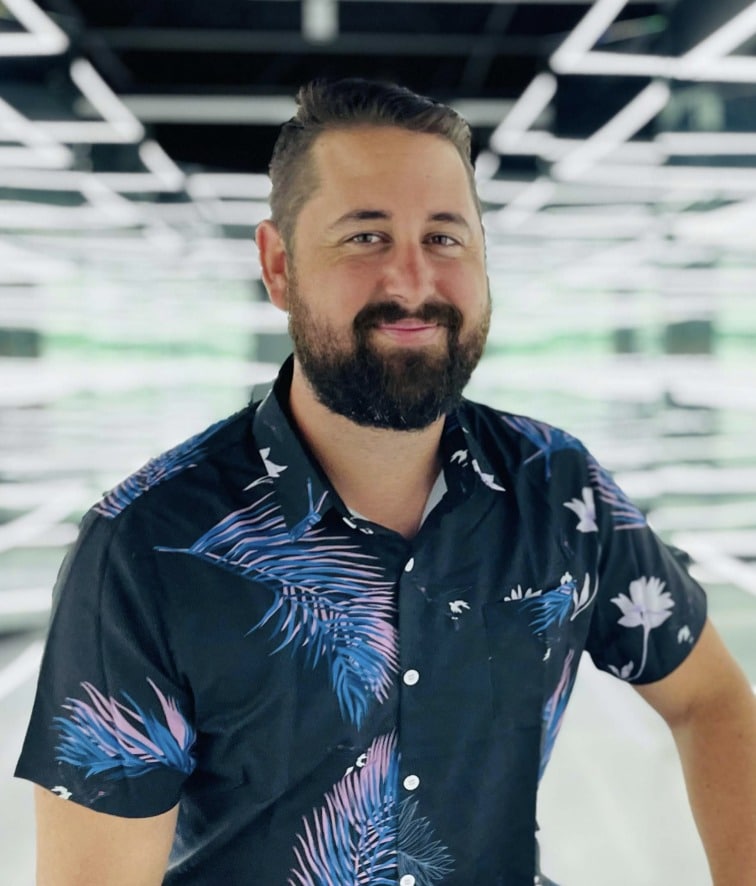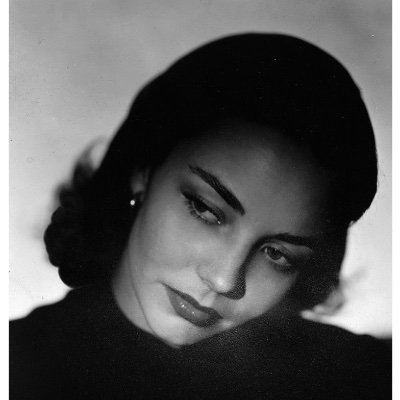
Artist Preston Zeller made the decision to document his grieving process in the form of a documentary as a way to connect with and inspire others who are experiencing the same emotional struggles. Over the course of a year, Zeller committed to producing a painting every single day, with the intention of creating one massive collage by the end. The resulting film The Art of Grieving, has been received positively by critics and audiences alike.
I was recently given the chance to interview Zeller about his artistic process and the struggles that he faced while bringing his story to the screen.
Why did you want to offer up a public account of your grieving process and what do you hope audiences take away from this film?
That’s an interesting question. It partly stemmed from my own experience, in that people aren’t very good at talking about grief. That comes as a result of the fact that people pretend that grief kind of goes away or just doesn’t exist after you have a few days or a week off after losing somebody. I felt comfortable enough saying “you know what? I can put my story out there.” The bizarre circumstances that I faced helped to make this story interesting and somewhat relatable. So many people have had to deal with the pain of losing a sibling and I felt as though my story wasn’t all that uncommon.
Just presenting my own authentic perspective and avoiding a didactic approach was very important to me. If I can help to stir the pot and encourage people to have conversations about this issue, I have achieved something significant. Even if you hate the film, you might find yourself talking about it. What I want people to get out of it is just feeling empowered to go do something about their grief or to go talk with someone who they know is going through grief.
A big part of the audience for this film is made up of people who have gone through grief themselves. They can identify with what I had to go through and learn from what various professionals discuss. I just wanted to proliferate discussions about grief and removing the social stigma that is attached to it. People shouldn’t have to bottle up their emotions.
You also discuss art therapy and the positive impact that it can have on people who, like yourself, have suffered through trauma. Why do you think that the practice hasn’t been more widely implemented and do you think that more research should be conducted in this area?
I think it hasn’t been more widely implemented because so many resources need to be adopted from a corporate standpoint. If you’re working for a corporation and you have human resources benefits, you are usually recommended for talk therapy. If you experience a loss, it’s difficult to obtain access to resources that are not subsidized. Art therapy isn’t covered by insurance.
There are a lot of people who aren’t aware of this practice and relatively few individuals who serve as licensed art therapists. Once you become certified as a psychologist, you have to go get further certification to do art therapy. More education and training is required to do that. On a broader level, people just don’t know about it. I’ve met therapists who claim to have never heard of this form of therapy. They’re so caught up in studying more traditional forms of therapy that they don’t get exposed to this practice.
When you paint, you talk about wanting to be freed from your inhibitions. How do you put yourself in that mindset and is it difficult to overcome those inhibitions?
When I talk about being free of my inhibitions while painting, it relates back to the decision making process that I employ. There’s a term you may heard of, flow state, and it applies to both artists and musicians. The idea is that the expectations that you have for yourself determine how you perform. The reason why that’s such a pleasurable state of being is because it turns off the side of your brain that causes you to doubt yourself. When you start second guessing yourself and wondering whether your loved ones don’t believe in you, it becomes a problem.
As children, we don’t think that way. I have three young kids, and I see them play and I see them draw and I see them create. At around eight or nine or ten years old, you become so much more aware of the world and how cruel people can be. To some degree, I think you have to accept the fact that some of the art that you create won’t be as spectacular as you want it to be. Rather than fixating on how it’s going to look, you should focus on how you might feel after making it. Naturally, you can’t just flip a switch, but you have to set out certain intentions and follow through with them. I shared all of the paintings that I produced, even when I didn’t like them, and that’s okay. That wasn’t the point. The point was putting together a collective piece.
One of the ideas that you bring up is that individuals who are not formally trained artists can often produce impressive examples of grief art. Do you think that their primitivism provides them with a form of insight that experienced artists do not possess?
When you’re a more experienced artist, you tend to be harder on yourself. You have higher expectations. An inexperienced artist still has the ability to produce great work and can still fall prey to their own insecurities. Plenty of students joke that they can only draw stick figures and the job of an art teacher is to put them in a position where they’re confident enough to create something that isn’t especially beautiful. It doesn’t have to make it into an art gallery. It has to serve as something that is going to help me express and understand these different things that I’ve gone through.
You reflect upon the purpose of ceremonial art at one point. What do you think differentiates it from other forms of grief art?
People have always been very tribal. In the past, you lived, grew up and died in the presence of the same group of people that your ancestors were surrounded by for a long time. In many ways, as I kind of shared in the film, that in and of itself created these customs designed to respond to death. Nowadays, people move all around the world all the time; especially people who marry into very different cultures. Those people provably don’t end up carrying over the spiritual practices that they grew up with. They face a real conundrum there.
I think it’s a real problem that people are so uncomfortable talking about what happens when someone dies. You think that you can just make everything up as you go along, but it’s not that simple. It’s kind of weird that we don’t want to do it. People get the opportunity to return to the roots of the culture that they grew up in when somebody that they care about dies. The importance of that event needs to be honored and I think that these cultural and spiritual traditions can be helpful. They let you move slowly through the different stages of grief and ensure that you don’t feel like you’re alone.
At many points, you emphasize the fact that therapy is not a magic bullet treatment for grief. Why did you feel that it was important to highlight this point?
You devalue the experience that people go through by suggesting that there’s some sort of time limit attached to grief. There is no limit to the stages of grief that you might have to go through. The stages of grief theory, which was first proposed by Elisabeth Kübler-Ross, was designed to apply to anticipatory grief. Those terms have all been hijacked and people end up treating them in the same way that someone attending Alcoholics Anonymous meetings would.
It’s much more complex than people understand it to be. I think it all stems from a lack of understanding of the complex nature of grief. That’s why I wanted to make my own contribution to this ongoing discussion. The mainstream thinking that surrounds the topic of grief is awfully disappointing. We should all be doing more. If we provided more resources to help those in need, we might see the development of a more productive work culture. Recently I read an article that stated that there is a $56 billion productivity loss in the United States alone as a result of grief.
The film also stresses the significance of maintaining a consistent workflow. How did you reach the ambitious targets that you set for yourself?
I think when you’re doing a project or you have some big goal, you have to be really clear about what that is and know that not every day is going to be great. As inspiring as the beginning or the end of the project is, there are so many instances along the way where it’s tough. I think working out is probably the easiest goal to set for yourself. People set a weight loss goal, or they want to have a six pack. They work out for a month and then feel upset when they don’t have the results that they want within a month. You have to accept the fact that things will take a while. There is value in consistency and you shouldn’t channel all of your energies into one big effort. I learned a lot through this process. I was pretty impatient and that was part of the reason why I decided to take this challenge on. In the end, I feel that I gained something out of it.
That’s fantastic to hear. Now that you have completed this project, what do you plan to do next?
About a year ago, I developed a process to help other people walk through their own grieving experience and their own relationship to grief. I help to develop those abstract thoughts into a painting. That’s what we over at Zellerhaus do. There are other avenues that I would like to explore in the future. I want to address bereavement policies and measures that can be taken to provide the bereaved with more resources to work with. The documentary has provided me with a great platform from which I can communicate with people from all around the world. Just recently, I was able to have a conversation with another person who is still going through the grieving process while at furniture store recently. I wouldn’t have been able to do something like that if I hadn’t made this documentary.
The Art of Grieving is currently available to stream on Plex and Tubi.
Don’t forget to follow us on Twitter or Instagram or like us on Facebook.

I am passionate about screwball comedies from the 1930s and certain actresses from the Golden Age of Hollywood. I’ll aim to review new Netflix releases and write features, so expect a lot of romantic comedies and cult favourites.
Discover more from
Subscribe to get the latest posts sent to your email.
